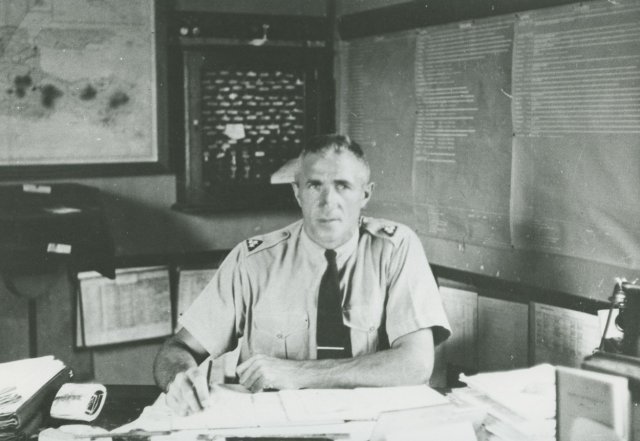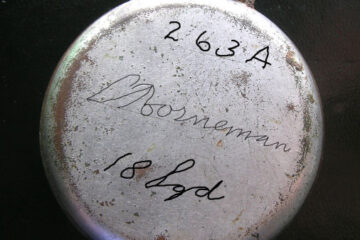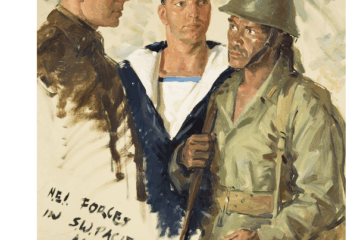The following information comes from the book Allies in a Bind from Dr Jack Ford.
On 7 June 1943, the Dutch detailed a plan for a new Mitchell squadron, designated No.119, to replace No.18 Squadron as the latter had suffered heavy aircrew losses in the first half of 1943. The Mitchell squadrons’ changeover was to be gradual. Two flights of No.119 Squadron were to arrive from the USA between 15 to 30 September 1943, two flights in October, with the remainder arriving in November. Initially, No.119 Squadron was to be based at Sydney where it was to train in submarine patrols and sea reconnaissance.
By 8 July, the RAAF insisted that No.119 Squadron form in NWA where No.18 Squadron was to continue operations rather than be replaced.
On 13 July, Major Te Roller, for the NEI Commission, met with Air Vice-Marshal Bostock to settle this matter. It was learnt that the Dutch wanted both squadrons operating from the NWA, from where they could bomb the NEI.
The Dutch wanted to form a third auxiliary squadron to be held in reserve at Sydney. It would the train replacement crews for the two Mitchell squadrons. Bostock wanted this reserve squadron based in Canberra.
On 1 September 1943, No.119 (NEI) Squadron was formed in Canberra under the command of Lieutenant-Colonel M. Van Haselen. Squadron-Leader E.C. Rutter led its RAAF component. The initial aircraft allocation totalled two Mitchells and a Lodestar transport plane.
The Dutch hoped to fly No.18 Squadron crews to join No.119 Squadron in Canberra then replace them with fresh crews from the USA. It was not expected that No.119 Squadron would be ready for the transfer to the NWA until 30 November.
The RAAF wanted No.119 Squadron operational as quickly as possible or have No.18 Squadron’s combat readiness diminished. The RAAF proposed that No.119 Squadron be sent to Darwin for acclimatisation. In Darwin, Lieutenant Gus Winckel would be attached to No.119 Squadron to teach the anti-shipping techniques developed by No.18 Squadron. For the rest of 1943, No.119 squadron awaited a supply of Mitchells, air and ground crew that could make it operational. It was the war situation rather than financial or political considerations that defeated the use of this second NEI Mitchell squadron.
No.119 Squadron had existed for three months when Ludolph Hendrik van Oyen Chief of Staff of the Royal Netherlands East Indies Army visited it in Canberra on 10 November. He met some of his ex-trainees from the USA and saw that the squadron still had few planes and few personnel.
By then the Dutch were having major staffing problems in Canberra. Apart from No.119 Squadron, they had a new No.120 Squadron, a reserve squadron and an NEI Aircraft and Personnel Pool being formed there.
Van Oyen’s visit gave him the chance to realistically assess Dutch plans on the basis of the inability to provide personnel, especially ground crews, to man three new squadrons. There simply were not enough new crews coming from Jackson. Accidents alone killed 38 Dutch trainees during the War. No.18 Squadron’s heavy personnel losses combined with too few replacements finally sealed No.119 Squadron’s fate. On 10 December 1943, No.119 Squadron was disbanded with some of its planes and aircrews sent as reinforcements to No.18 Squadron. The 11 RAAF ground crew sent to Jackson for training were recalled.
No.119 Squadron’s demise brought benefits to the Dutch and the Australians. The Dutch paid cash for 39 Mitchells for No 119 Squadron, of which 18 would arrive during 1944
Peter Dunn AOM has more detailed information on119 (NEI) Squadron

The following website also offers information on the Air Force of the Royal Netherlands East Indies Army. Key in Netherlands East Indies for an overview of available files.


